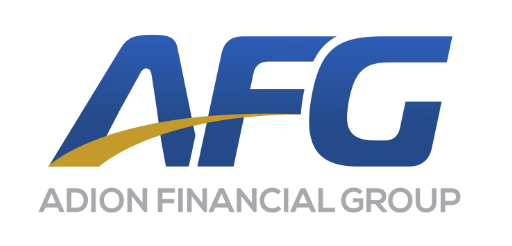
Top 3 Recommended Policies
Connecticut stands out as a powerhouse in the insurance industry, with its economic landscape deeply intertwined with insurance services. For retail center owners and operators in the state, understanding the nuances of insurance is not just beneficial—it’s essential. This comprehensive guide explores the insurance environment in Connecticut, focusing on retail centers, the industry’s economic impact, recent trends, and what business owners need to consider when securing coverage.
Connecticut’s insurance sector contributes nearly $14 billion annually to the state’s gross domestic product, underscoring its significance to the local economy. This robust industry presence means that retail centers benefit from a competitive and well-regulated insurance market, tailored to meet their unique needs. For more insight into Connecticut’s insurance industry impact, check out this PriceWaterhouseCoopers report.
The Importance of Insurance for Retail Centers in Connecticut
Retail centers are hubs of commercial activity, hosting multiple businesses and attracting significant foot traffic. This environment brings a variety of risks, from property damage and liability claims to business interruption and employee injuries. Proper insurance coverage is vital to protect retail center owners, tenants, and customers alike.
Connecticut’s insurance market is uniquely positioned to support retail centers due to its size and specialization. The state’s insurance sector boasts the highest relative employment and payroll in the country, contributing about 9% of Connecticut’s GDP. This concentration of expertise means retail centers have access to tailored insurance products and knowledgeable providers who understand local risks and regulations. Furthermore, the close-knit nature of the insurance community in Connecticut fosters collaboration among insurers, brokers, and retail center operators, ensuring that innovative solutions are developed to meet the evolving needs of the retail landscape.
Types of Insurance Coverage for Retail Centers
Retail center insurance typically includes several key coverages:
Property Insurance: Covers damage to buildings, equipment, and inventory caused by fire, storms, vandalism, or other covered events.
General Liability Insurance: Protects against claims of bodily injury or property damage suffered by customers or visitors on the premises.
Business Interruption Insurance: Provides compensation for lost income if the retail center must close temporarily due to a covered event.
Workers’ Compensation: Mandatory in Connecticut, this covers employee injuries sustained on the job.
Commercial Auto Insurance: For vehicles used in retail operations, such as delivery trucks or service vehicles.
Each retail center will have unique needs based on size, tenant mix, and location, so working with an insurer familiar with Connecticut’s market is crucial. Additionally, the dynamic nature of retail, especially with the rise of e-commerce and changing consumer behaviors, necessitates that retail centers remain adaptable. Insurers are increasingly offering specialized coverages that address emerging risks, such as cyber liability insurance, which protects against data breaches and online fraud. This is particularly important as retail centers integrate technology into their operations, from point-of-sale systems to customer relationship management tools, making them more vulnerable to cyber threats.
Moreover, as sustainability becomes a priority for consumers and businesses alike, retail centers may also consider environmental liability insurance. This coverage can protect against claims related to pollution or environmental damage, which is especially pertinent for centers that host businesses dealing with hazardous materials. By proactively addressing these risks through comprehensive insurance strategies, retail center owners can not only safeguard their investments but also enhance their reputation as responsible and forward-thinking businesses in the Connecticut retail landscape.

Connecticut’s Insurance Industry: A Robust Economic Engine
The insurance industry in Connecticut is not only a critical economic driver but also a leader in innovation and growth. According to a PriceWaterhouseCoopers study, the sector contributes just under $14 billion annually to the state’s GDP. This impressive figure highlights the depth of expertise and resources available within the state, which benefits retail centers seeking comprehensive insurance solutions.
Connecticut’s reputation as the “insurance capital of the world” is reinforced by its growing captive insurance sector. In 2023 alone, the captive insurance market expanded by 37%, with 10 new captive insurers entering the state. This growth reflects Connecticut’s ability to attract global insurers and service providers, offering businesses—including retail centers—more options for customized risk management strategies.
Insurance Commissioner Andrew N. Mais remarked, “Connecticut continues to attract global captive insurers and service providers, further establishing itself as a premier domicile and solidifying our title as the insurance capital of the world.” This dynamic environment means retail center owners can access cutting-edge insurance products tailored to their specific needs.
What This Means for Retail Centers
The strength of Connecticut’s insurance market translates into competitive pricing and innovative coverage options for retail centers. Additionally, the state’s regulatory framework supports businesses by maintaining balance between consumer protection and industry growth. For example, the Connecticut Insurance Department actively works to hold down insurance rates where possible, saving consumers and businesses millions annually.
In 2023, the department saved drivers $123 million by regulating car insurance rates, demonstrating a commitment to affordability and fairness. Retail centers benefit indirectly from such regulatory oversight, as it helps stabilize insurance costs across the board. Furthermore, the presence of numerous insurance companies fosters a competitive landscape that encourages innovation in policy offerings. Retail centers can now find specialized insurance products that cater to their unique operational risks, such as cyber liability insurance, which has become increasingly vital in today’s digital marketplace.
Moreover, Connecticut's insurance industry is also making strides in sustainability and social responsibility. Many insurers are now offering green insurance products that incentivize environmentally friendly practices among retail centers. This not only helps businesses reduce their carbon footprint but also positions them favorably in the eyes of eco-conscious consumers. As the demand for sustainable practices grows, retail centers that adopt these insurance solutions can enhance their reputation while potentially lowering their overall risk exposure, creating a win-win scenario for both the environment and their bottom line.
Challenges and Trends in Connecticut Retail Insurance
While Connecticut’s insurance industry is strong, retail centers face some challenges that affect insurance costs and availability. One notable trend is the recent increase in approved car insurance rates, which rose by 10.7% in 2024—more than double the national average hike of 4.8%. This spike reflects broader market pressures such as increased claims severity and limited insurer capacity.
Fenhua Li, Director of the Captive Insurance Division at the Connecticut Insurance Department, noted, “The business is evolving so quickly... They’re short of capacity.” This shortage means insurers are more cautious, potentially leading to higher premiums or stricter underwriting standards for retail centers. The impact of these changes can be profound, as retail businesses often operate on thin margins, making any increase in operational costs particularly challenging to absorb.
Moreover, the rise in natural disasters and climate-related events has further complicated the insurance landscape. Retail centers are increasingly at risk from flooding, hurricanes, and other extreme weather phenomena, which can lead to significant property damage and business interruption. Insurers are responding by tightening coverage terms and increasing premiums for locations deemed high-risk, forcing retail owners to reassess their insurance strategies and disaster preparedness plans.
How Retail Centers Can Navigate These Challenges
Retail center owners should work closely with insurance brokers who understand the Connecticut market and can negotiate the best terms. Exploring captive insurance options may also be beneficial, as these allow businesses to self-insure certain risks while benefiting from state regulatory advantages. By pooling resources with other businesses, retail centers can create a more stable insurance environment that mitigates the effects of market volatility.
Additionally, implementing robust risk management practices—such as enhanced security measures, regular property maintenance, and employee safety training—can reduce claims and help lower insurance premiums over time. Investing in technology, such as surveillance systems and smart building solutions, can also play a crucial role in minimizing risks. Furthermore, fostering a culture of safety and awareness among employees not only protects the workforce but can also lead to fewer accidents and claims, ultimately benefiting the bottom line and improving the center’s insurability.
Future Outlook for Connecticut’s Retail Insurance Market
The Property, Casualty, and Direct Insurance industry in Connecticut is projected to reach a market size of $17.1 billion by 2025, signaling continued growth and opportunity. This expansion is driven by innovation in insurance products and the state’s ability to attract new insurers and service providers. As the market evolves, we can expect to see a greater emphasis on sustainability and climate-related risks, prompting insurers to develop products that address the unique challenges posed by environmental changes. This shift not only reflects a growing awareness of climate issues but also aligns with the increasing demand from consumers for responsible and eco-friendly business practices.
Retail centers can expect more tailored insurance solutions as the industry evolves, including increased use of technology for risk assessment and claims processing. The integration of artificial intelligence and big data analytics will allow insurers to offer more personalized policies, assessing risks in real-time and adjusting coverage as needed. The state’s leadership in captive insurance also offers retail businesses unique opportunities to customize their coverage and manage risks more effectively. Captive insurance allows businesses to create their own insurance solutions, which can lead to significant cost savings and enhanced risk management strategies, particularly for niche markets that may not be adequately served by traditional insurers.
Staying informed about industry trends and maintaining strong relationships with insurance professionals will be key for retail center owners aiming to optimize their insurance strategies in this dynamic environment. Networking opportunities through industry associations and conferences will be crucial for sharing insights and best practices. Additionally, as regulatory frameworks continue to evolve, retail businesses must remain vigilant to ensure compliance and take advantage of any incentives that may arise, particularly those aimed at promoting innovation and resilience in the face of emerging risks.

Conclusion: Securing the Right Insurance for Connecticut Retail Centers
Connecticut’s insurance industry is a cornerstone of the state’s economy and a vital resource for retail centers. With nearly $14 billion in annual economic contribution and a rapidly growing captive insurance sector, the state offers a mature and competitive insurance market.
Retail center owners must understand the specific risks they face and seek comprehensive coverage that protects property, liability, business interruption, and employees. Navigating recent challenges like rising insurance rates requires proactive risk management and expert guidance.
By leveraging Connecticut’s strong insurance infrastructure and staying abreast of market developments, retail centers can safeguard their investments and support long-term business success. For more insights into the growth of Connecticut’s captive insurance sector, visit the
Hartford Business Journal.
Contact Us
Phone
Locations
Connecticut Location
703 Hebron Ave., 3rd Floor, Glastonbury, CT 06033
North Carolina Location
436 East 36th St., Charlotte, NC 28205


